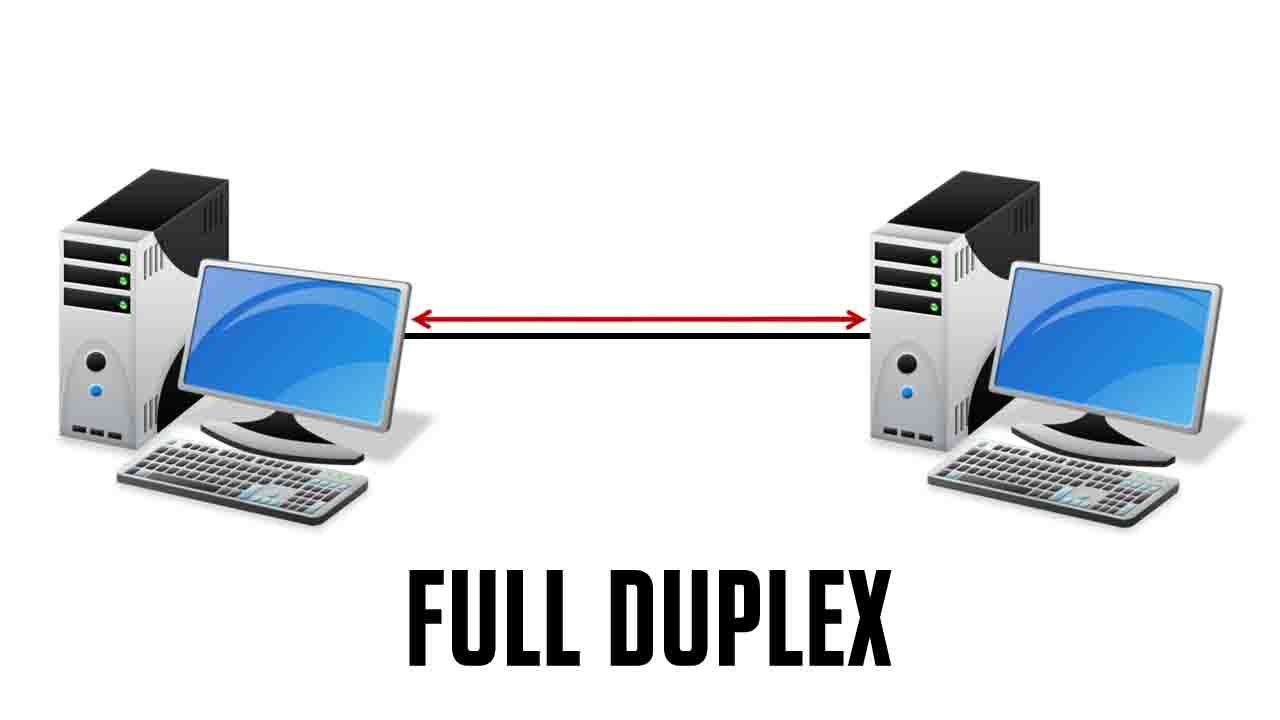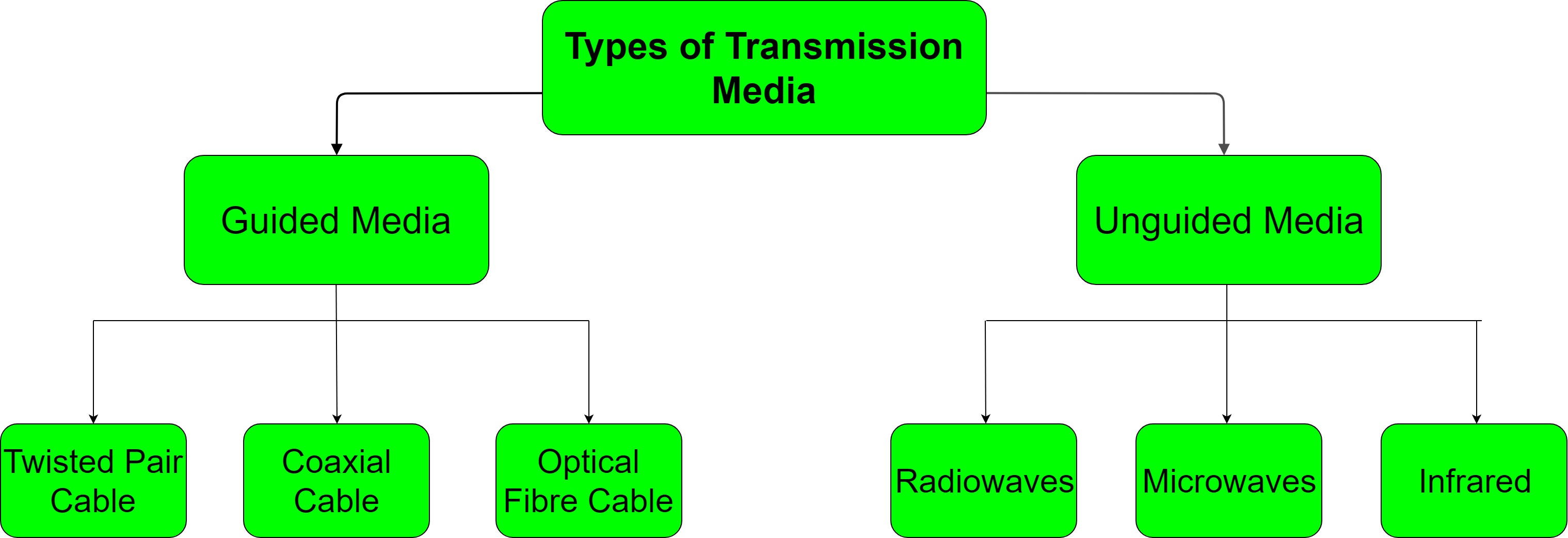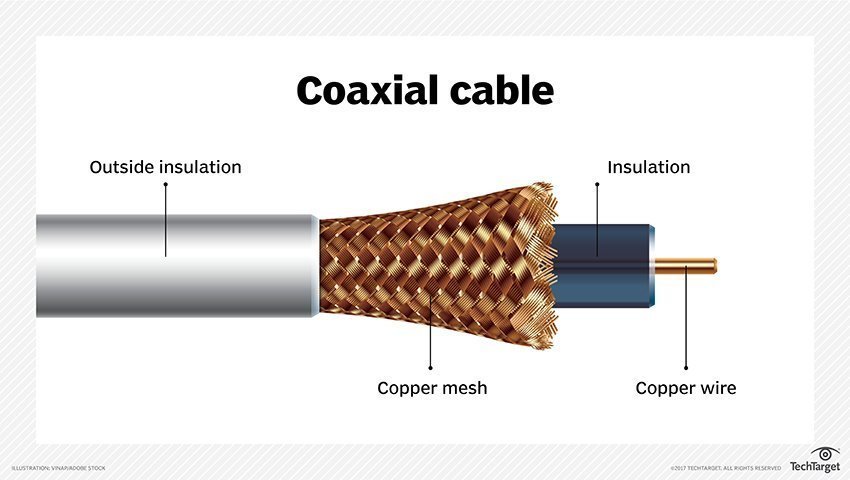Networking and Telecommunication
Introduction
Data communication system
Components of data communication
Modes of Transmission
The word 'communication' means sending and receiving information between two or more persons. In 1870, Alexander Graham Bell invented telephone which revolutionized the world and brought a drastic change in the long distance communication. The development of microcomputers in 1980's has has brought a new way of communication. The development of computer network system has made communication easier, faster and changed the world as 'global village'.
Back to top of page
Data Communication system
Components of data communication
1. Data:
2. Sender:
3. Receiver:
4. Transmission medium:
5. Protocol:

Modes of Transmission
- Simplex Mode
- Half duplex Mode
- Full duplex Mode
SIMPLEX Mode
In this type of transmission mode, data can be sent only in one direction i.e. communication is unidirectional. We cannot send a message back to the sender. Unidirectional communication is done in Simplex Systems where we just need to send a command/signal, and do not expect any response back.
Examples of simplex Mode are loudspeakers, television broadcasting, television and remote, keyboard and monitor etc.
HALF DUPLEX Mode
Half-duplex data transmission means that data can be transmitted in both directions on a signal carrier, but not at the same time.
For example, on a local area network using a technology that has half-duplex transmission, one workstation can send data on the line and then immediately receive data on the line from the same direction in which data was just transmitted. Hence half-duplex transmission implies a bidirectional line (one that can carry data in both directions) but data can be sent in only one direction at a time.
Example of half duplex is a walkie- talkie in which message is sent one at a time but messages are sent in both the directions.
FULL DUPLEX Mode
In full duplex system we can send data in both the directions as it is bidirectional at the same time in other words, data can be sent in both directions simultaneously.
Example of Full Duplex is a Telephone Network in which there is communication between two persons by a telephone line, using which both can talk and listen at the same time.

Bandwidth of communication:
Bandwidth describes the maximum data communication rate of a network or internet connection. It measures how much data can be sent over a specific connection in a given amount of time. For example, a gigabit Ethernet connection has a bandwidth of 1,000 mbps (125 megabytes per second). An Internet connection via cable modem may provide 25 Mbps of bandwidth.
While bandwidth is used to describe network speeds, it does not measure how fast bits of data move from one location to another. Since data packets travel over electronic or fibre optic cables the speed of each bit transferred is negligible. Instead, bandwidth measures how much data can flow through a specific connection at one time.
Communication media:
Types of Transmission Media
In data communication terminology, a transmission medium is a physical path between the transmitter and the receiver i.e it is the channel through which data is sent from one place to another. Transmission Media is broadly classified into the following types:

1. Guided Media:
Guided media are Wired or Bounded transmission media. Signals being transmitted are directed and confined in a narrow pathway by using physical links.
There are 3 major types of Guided Media:
(i) Twisted Pair Cable –
It consists of 2 separately insulated conductor wires wound about each other. Generally, several such pairs are bundled together in a protective sheath. They are the most widely used Transmission Media. Twisted Pair is of two types:
- Unshielded Twisted Pair (UTP):
This type of cable has the ability to block interference and does not depend on a physical shield for this purpose. It is used for telephonic applications
Advantages:
- Least expensive
- Easy to install
- High speed capacity
Disadvantages:
- Susceptible to external interference
- Lower capacity and performance in comparison to STP
- Short distance transmission due to attenuation
- Shielded Twisted Pair (STP):
This type of cable consists of a special jacket to block external interference. It is used in fast-data-rate Ethernet and in voice and data channels of telephone lines.Advantages:
- Better performance at a higher data rate in comparison to UTP
- Eliminates crosstalk
- Comparitively faster
Disadvantages:
- Comparitively difficult to install and manufacture
- More expensive
- Bulky
(ii) Coaxial Cable –
It has an outer plastic covering containing 2 parallel conductors each having a separate insulated protection cover. Coaxial cable transmits information in two modes: Baseband mode(dedicated cable bandwidth) and Broadband mode(cable bandwidth is split into separate ranges). Cable TVs and analog television networks widely use Coaxial cables.

Advantages:
- High Bandwidth
- Better noise Immunity
- Easy to install and expand
- Inexpensive
Disadvantages:
- Single cable failure can disrupt the entire network
(iii) Optical Fibre Cable –
It uses the concept of reflection of light through a core made up of glass or plastic. The core is surrounded by a less dense glass or plastic covering called the cladding. It is used for transmission of large volumes of data.

Advantages:
- Increased capacity and bandwidth
- Light weight
- Less signal attenuation
- Immunity to electromagnetic interference
- Resistance to corrosive materials
Disadvantages:
- Difficult to install and maintain
- High cost
- Fragile
- unidirectional, ie, will need another fibre, if we need bidirectional communication
2. Unguided Media:
It is also referred to as Wireless or Unbounded transmission media.No physical medium is required for the transmission of electromagnetic signals.
Features:
- Signal is broadcasted through air
- Less Secure
- Used for larger distances
There are 3 major types of Unguided Media:
(i) Radiowaves –
These are easy to generate and can penetrate through buildings. The sending and receiving antennas need not be aligned. Frequency Range:3KHz – 1GHz. AM and FM radios and cordless phones use Radiowaves for transmission.
Further Categorized as (i) Terrestrial and (ii) Satellite.
(ii) Microwaves –
It is a line of sight transmission i.e. the sending and receiving antennas need to be properly aligned with each other. The distance covered by the signal is directly proportional to the height of the antenna. Frequency Range:1GHz – 300GHz. These are majorly used for mobile phone communication and television distribution.
(iii) Infrared –
Infrared waves are used for very short distance communication. They cannot penetrate through obstacles. This prevents interference between systems. Frequency Range:300GHz – 400THz. It is used in TV remotes, wireless mouse, keyboard, printer, etc.






Post a Comment
Thank you for your comment